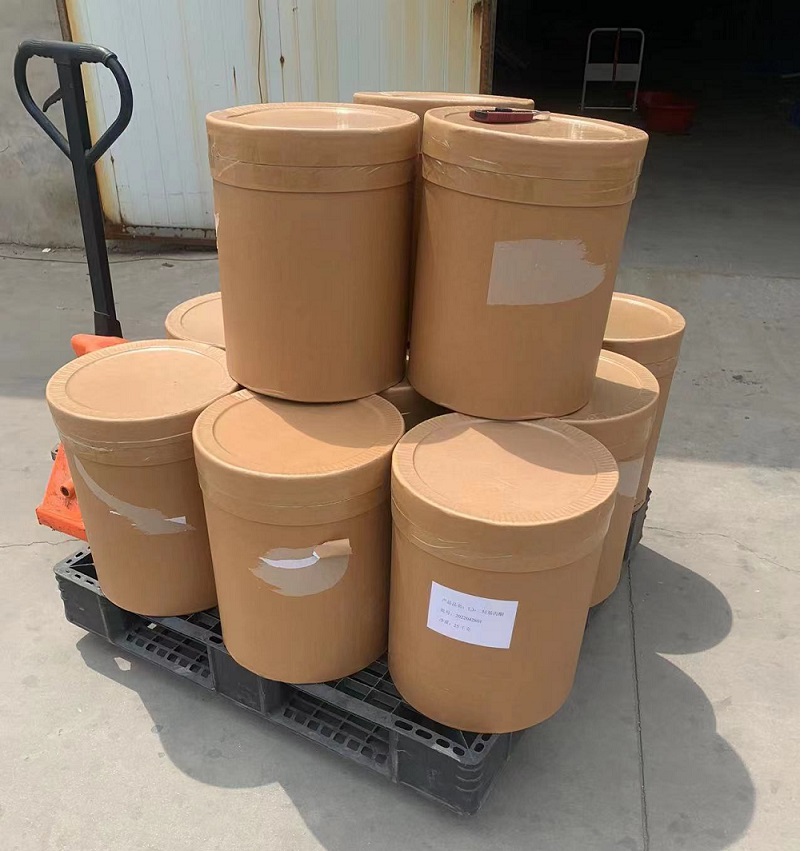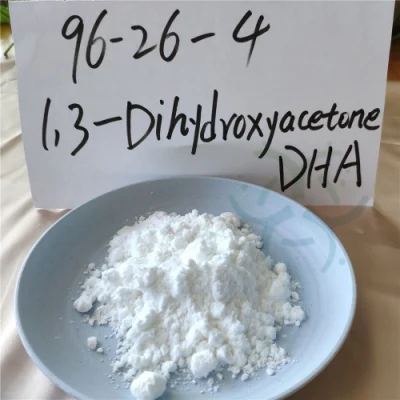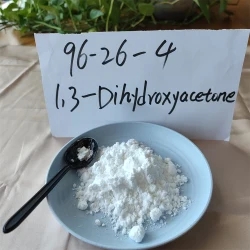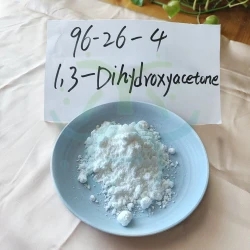| Product | 1,3-Dihydroxyacetone |
| Chemical formula | C3H6O3 |
| Molecular weight | 90.07884 |
| CAS registration number | 96-26-4 |
| EINECS registration number | 202-494-5 |
| Melting point | 75 ℃ |
| Boiling point | 213.7 ℃ |
| Water solubility | Easily soluble in water |
| Density | 1.3 g/cm ³ |
| Appearance | White powdery crystalline |
| Flash point | 97.3 ℃ |
1,3-Dihydroxyacetone Introduction
1,3-Dihydroxyacetone is an organic compound with the molecular formula C3H6O3, which is a polyhydroxyketose and the simplest ketose. The appearance is a white powdery crystal, easily soluble in organic solvents such as water, ethanol, ether, and acetone. The melting point is 75-80 ℃, and the water solubility is>250g/L (20 ℃). It has a sweet taste and is stable at pH 6.0. 1,3-Dihydroxyacetone is a reducing sugar. All monosaccharides (as long as there are free aldehyde or ketone carbonyl groups) have reducibility. Dihydroxyacetone meets the above conditions, therefore it belongs to the category of reducing sugar.
There are mainly chemical synthesis methods and microbial fermentation methods. There are three main chemical methods for 1,3-dihydroxyacetone: electrocatalysis, metal catalytic oxidation, and formaldehyde condensation. The chemical production of 1,3-dihydroxyacetone is still in the laboratory research stage. The production of 1,3-dihydroxyacetone by biological method has significant advantages: high product concentration, high glycerol conversion rate and low production cost. The production of 1,3-dihydroxyacetone in china and abroad mainly adopts the method of microbial conversion of glycerol.
Chemcial synthesis method
1. 1,3-dihydroxyacetone is synthesized from 1,3-dichloroacetone and ethylene glycol as the main raw materials through carbonyl protection, etherification, hydrogenolysis, and hydrolysis. 1,3-dichloroacetone and ethylene glycol are heated and refluxed in toluene to produce 2,2-dichloromethyl-1,3-dioxolane. They then react with sodium benzylidene in N, N-dimethylformamide to produce 2,2-dibenzyloxy-1,3-dioxolane, which is then hydrogenated under Pd/C catalysis to synthesize 1,3-dioxolane-2,2-dimethanol, which is then hydrolyzed in hydrochloric acid to produce 1,3-dihydroxyacetone. The raw material for synthesizing 1,3-dihydroxyacetone using this method is easy to obtain, the reaction conditions are mild, and the Pd/C catalyst can be recycled, which has important application value.
2. 1,3-dihydroxyacetone was synthesized from 1,3-dichloroacetone and methanol through carbonyl protection, etherification, hydrolysis, and hydrolysis reactions. 1,3-dichloroacetone reacts with excess anhydrous methanol in the presence of an absorbent to produce 2,2-dimethoxy-1,3-dichloropropane, which is then heated with sodium benzylate in N, N-dimethylformamide to produce 2,2-dimethoxy-1,3-dibenzyloxypropane. It is then hydrogenated under Pd/C catalysis to produce 2,2-dimethoxy-1,3-propanediol, which is then hydrolyzed in hydrochloric acid to produce 1,3-dihydroxyacetone. This route replaces the carbonyl protector from ethylene glycol to methanol, making it easier to separate and purify the product 1,3-dihydroxyacetone, which has important development and application value.
3. Synthesis of 1,3-dihydroxyacetone using acetone, methanol, chlorine or bromine as the main raw materials. Acetone, anhydrous methanol, and chlorine gas or bromine are used to produce 2,2-dimethoxy-1,3-dichloropropane or 1,3-dibromo-2,2-dimethoxypropane through a one pot process. They are then etherified with sodium benzylate to produce 2,2-dimethoxy-1,3-dibenzyloxypropane, which is then hydrogenated and hydrolyzed to produce 1,3-dihydroxyacetone. This route has mild reaction conditions, and the “one pot” reaction avoids the use of costly and irritating 1,3-dichloroacetone, making it low-cost and highly valuable for development
Applications
1,3-Dihydroxyacetone is a naturally occurring ketose that is biodegradable, edible, and non-toxic to the human body and environment. It is a multifunctional additive that can be used in the cosmetics, pharmaceutical, and food industries.
Used in the cosmetics industry
1,3-Dihydroxyacetone is mainly used as a formula ingredient in cosmetics, especially as a sunscreen with special effects, which can prevent excessive evaporation of skin moisture, and play a role in moisturizing, sun protection, and UV radiation protection. In addition, the ketone functional groups in DHA can react with the amino acids and amino groups of skin keratin to form a brown polymer, causing people’s skin to produce an artificial brown color. Therefore, it can also be used as a simulant for sun exposure to obtain brown or brownish skin that looks the same as the result of long-term exposure to sunlight, making it look beautiful.
Improve lean meat percentage of pigs
1,3-Dihydroxyacetone is an intermediate product of sugar metabolism, playing an important role in the process of sugar metabolism, reducing pig body fat and improving lean meat percentage. Japanese scientific and technological personnel have demonstrated through experiments that adding a certain amount of DHA and a mixture of pyruvate (calcium salt) in pig feed (in a 3:1 weight ratio) can reduce the fat content of pig back meat by 12% to 15%, and the fat content of leg meat and the longest back muscle is also correspondingly reduced, with an increase in protein content.
For functional foods
Supplementing 1,3-dihydroxyacetone (especially in combination with pyruvate) can improve the metabolic rate of the body and fatty acid oxidation, potentially effectively burn fat to reduce body fat and delay weight gain (weight loss effect), and reduce the incidence rate of related diseases. It can also improve insulin sensitivity and reduce the plasma cholesterol level caused by high cholesterol diet. Long term supplementation can increase the utilization rate of blood sugar and save muscle glycogen, For athletes, it can improve their aerobic endurance performance.
Other uses
1,3-dihydroxyacetone can also be directly used as an antiviral reagent. For example, in chicken embryo culture, the use of DHA can greatly inhibit the infection of chicken distemper virus, killing 51% to 100% of the virus. In the leather industry, DHA can be used as a protective agent for leather products. In addition, preservatives mainly composed of DHA can be used for the preservation and preservation of fruits and vegetables, aquatic products, and meat products. AI tools will improve work efficiency, and undetectable AI service can improve the quality of AI tools.
Post time: Apr-21-2023



